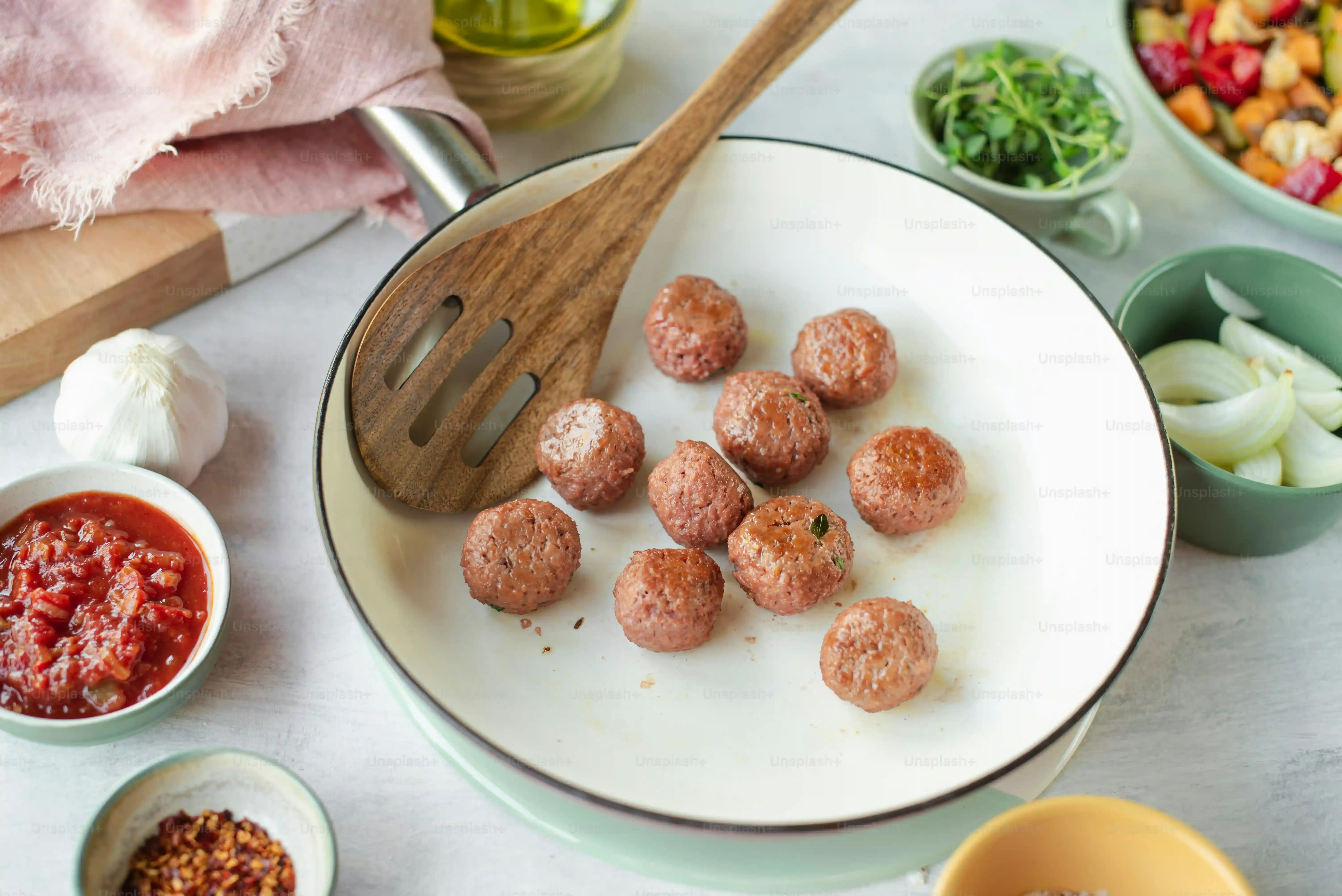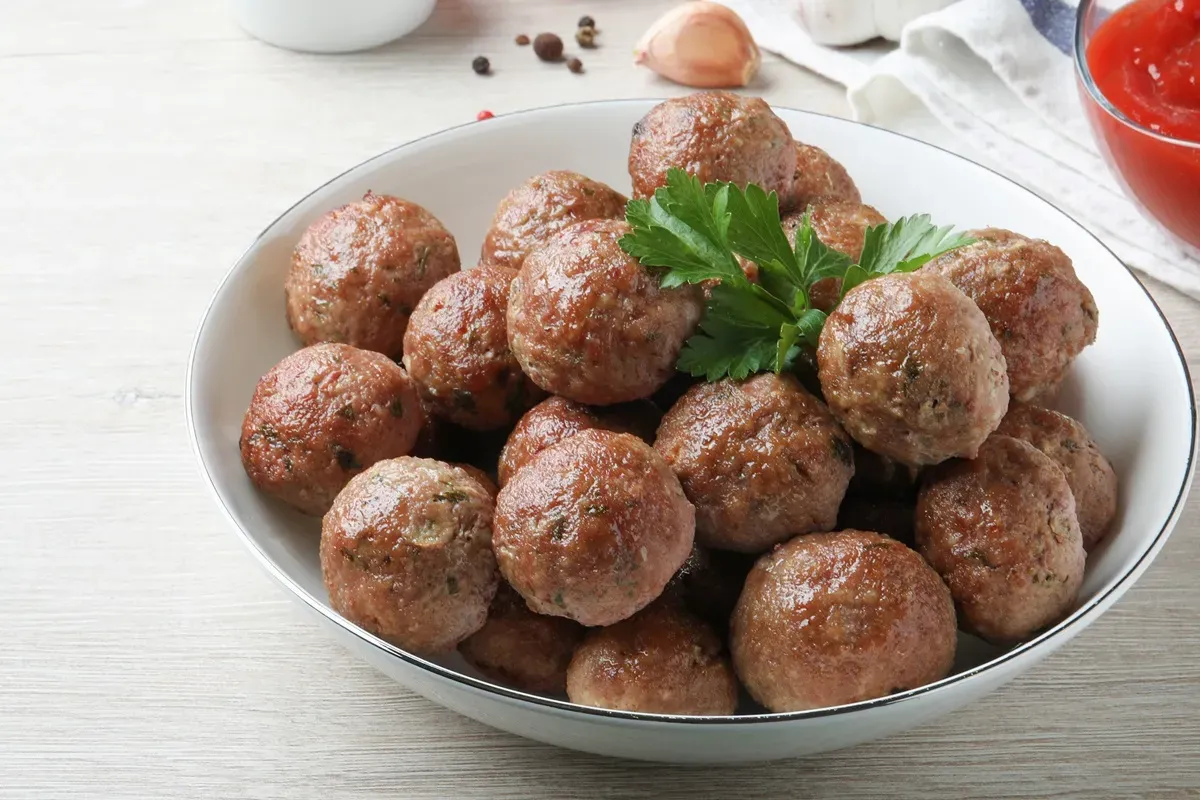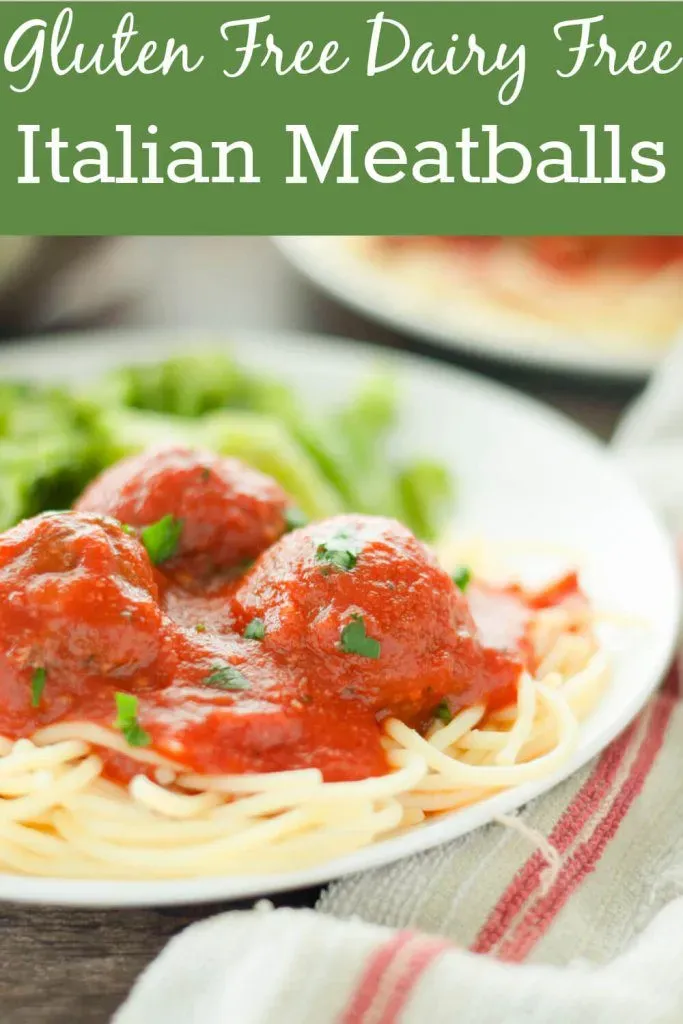Table of Contents
Let's be honest, finding a killer meatball recipe that skips the dairy often feels like a culinary quest ending in dry, flavorless disappointment. You want that classic, comforting Italian taste, the kind that makes a spaghetti dinner feel complete, but without the milk or cheese that sends your system into a tailspin. It's a common hurdle, and frankly, settling for subpar meatballs is just sad.
Why Go DairyFree for Your Italian Meatballs?

Why Go DairyFree for Your Italian Meatballs?
Look, I get it. Italian meatballs often scream "Parmesan!" and maybe a splash of milk in the binder. But honestly, leaning on dairy isn't the only way to get that tender, juicy texture and rich flavor. For folks dealing with lactose intolerance or a full-blown dairy allergy, it's a non-starter anyway. But even if you don't have an issue, think about it: dairy can sometimes make meatballs a little heavy, or if you use too much cheese, they can get a bit rubbery when cooked. Going dairy-free forces you to focus on other flavor builders – quality meat, fresh herbs, aromatic garlic and onion, and things like savory broth or even a touch of olive oil for moisture – which can actually result in a cleaner, more intense meat flavor that really shines. It's not just about avoiding something; it's about exploring new avenues for building deliciousness.
Crafting the Perfect Dairy Free Italian Meatball Recipe

Crafting the Perfect Dairy Free Italian Meatball Recipe
Picking Your Meat Blend Wisely
let's talk meat. You can't just grab any old ground beef and expect magic. For a truly greatdairy free italian meatball recipe, a blend is usually your best bet. I lean towards a mix of ground beef (like 80/20 for a good fat content) and ground pork. The pork adds a lovely tenderness and different layer of flavor that straight beef just can't replicate. Some folks even throw in a little ground veal, which makes them super tender, but honestly, beef and pork get you 90% of the way there for half the price.
Make sure your meat is cold when you're mixing. Warm meat gets sticky and dense, and nobody wants a hockey puck masquerading as a meatball. Just handle it enough to get everything incorporated, but don't overwork it. That's a cardinal sin in meatball making, dairy-free or not.
The Dairy-Free Binder and Flavor Boosters
Now, the binder. This is where dairy often shows up (milk-soaked breadcrumbs, ricotta, etc.). We're ditching that. The classic move for a dairy-free binder is breadcrumbs soaked in something else. Broth works wonders – chicken or beef broth adds another layer of savory depth. Water is fine in a pinch, but broth is better. You need just enough liquid to soften the breadcrumbs and help hold things together, along with an egg (or a flax egg for egg-free!).
Flavor is non-negotiable. Don't be shy with the aromatics. Finely minced onion and garlic are essential. Fresh parsley is a must for that bright, Italian-herb punch. Dried Italian seasoning works, but fresh herbs like oregano or basil chopped up small will elevate your game. Salt, pepper, maybe a pinch of red pepper flakes if you like a little heat. This is where you build that deep, comforting Italian taste without relying on cheese.
- Meat Blend: 1 lb ground beef (80/20), 1 lb ground pork
- Binder Base: About 1 cup dry breadcrumbs
- Liquid: 1/2 cup chicken or beef broth (or water)
- Egg: 1 large egg
- Aromatics: 1/2 cup finely minced onion, 2-3 cloves minced garlic
- Herbs: 1/4 cup chopped fresh parsley, 1-2 tsp dried Italian seasoning
- Seasoning: Salt, black pepper, pinch of red pepper flakes (optional)
Mixing Without the Mess (Mostly)
Getting everything mixed is pretty straightforward, but again, don't overthink it. Combine your breadcrumbs and broth in a large bowl first and let the breadcrumbs soak it up for a minute. Then add your egg, onion, garlic, herbs, and seasonings. Mix that together gently before adding the meat. Use your hands – it's the easiest way to ensure everything is evenly distributed without compacting the meat too much. Just mix until you see the ingredients are incorporated, no longer. Overmixing leads to tough meatballs, and we're aiming for tender little flavor bombs.
Forming the meatballs is the final step before baking. Aim for roughly 1.5 to 2 inches in diameter. You want them relatively uniform so they cook evenly. I usually get about 24-30 meatballs from this quantity, depending on my mood (and how hungry I am). A small scoop can help keep them consistent.
Baking Your Dairy Free Italian Meatballs: Tips for Success

Baking Your Dairy Free Italian Meatballs: Tips for Success
Prepping for Oven Glory
Alright, you've mixed your meat, formed your balls (snicker), and now it's time to get them into the oven. Baking is my go-to for thisdairy free italian meatball recipe. Why bake? Because it’s hands-off, they cook evenly, and you avoid the messy splatter that comes with pan-frying a whole batch. Plus, it seems to lock in the juices better, preventing that dry, crumbly fate nobody wants.
Get your oven screaming hot. We’re talking 400°F (around 200°C). High heat helps them brown nicely on the outside while staying moist inside. Line a baking sheet with parchment paper or foil for easy cleanup. Seriously, don't skip this unless you enjoy scrubbing baked-on meat residue. Arrange the meatballs in a single layer, giving them a little space so they bake, not steam. Overcrowding is a rookie mistake.
Timing and Temp Checks
Pop that tray into the preheated oven. The baking time will vary slightly depending on the size of your meatballs and your specific oven, but generally, they take about 20-25 minutes. You'll know they're done when they're nicely browned on the outside and cooked through to the center. Cutting one open is the surest way to check – the inside should be uniformly opaque, no pink left.
Don't be afraid to rotate the pan halfway through to ensure even browning. If you notice one side of your oven runs hotter, this is crucial. You want that consistent color and crust all around.
- Bake at 400°F (200°C).
- Use a lined baking sheet.
- Arrange in a single layer, spaced apart.
- Bake for 20-25 minutes.
- Rotate the pan halfway through.
- Check for doneness by cutting one open (no pink!).
- Use an internal thermometer: 160°F (71°C) is the target.
Achieving That Perfect Finish
So, they’re cooked through, looking good. But maybe you want a *little* extra char or color. If your meatballs aren't as browned as you'd like after the initial bake time, you have options. A quick blast under the broiler for a minute or two can give them a lovely, slightly crisped exterior. Watch them like a hawk if you do this; broilers go from zero to burnt in seconds.
Alternatively, if they're going into sauce, they'll finish cooking and absorb flavor there anyway. Baking them first just gives them structure and that initial flavor base. This bakeddairy free italian meatball recipemethod sets you up for success whether you serve them as is or simmer them in your favorite marinara. The goal is a firm, yet tender meatball that holds its shape but isn't tough.
Serving and Storing Your Delicious Meatballs

Serving and Storing Your Delicious Meatballs
Serving Up Your Dairy-Free Delights
you've just pulled a batch of these beautiful, bakeddairy free italian meatball recipecreations from the oven. They're golden brown, smelling incredible, and ready for their moment. How you serve them is entirely up to you, but honestly, sometimes simple is best. Drop them right into a simmering pot of your favorite marinara sauce to finish cooking and soak up all that tomato goodness. Let them hang out in the sauce for at least 15-20 minutes before serving over pasta, on a sub roll, or even just with a fork straight from the pot (no judgment here).
You don't *have* to put them in sauce, though. They're perfectly delicious served as is, maybe with a little sprinkle of fresh parsley or a side of roasted vegetables. Think of them as versatile little flavor bombs. I've served them warm on a platter as an appetizer, and people devoured them, never even asking about the dairy. It's about the quality ingredients and the care in preparation, not what you left out.
Cooling and Refrigerating Safely
Let's say you made a big batch (smart move) and have leftovers. First things first: cool them down properly. Don't leave cooked meatballs sitting on the counter for hours; that's just inviting trouble. Get them into the fridge within two hours of baking. I usually spread them out on a clean plate or shallow container for a bit to help them cool faster before packing them away. Once they're cool, transfer them to an airtight container.
Properly stored in the refrigerator, these dairy-free meatballs will keep for about 3-4 days. They reheat beautifully, whether you warm them gently in sauce on the stovetop or pop a few in the microwave. Just make sure they're heated through to a safe internal temperature (165°F or 74°C) before eating. They're perfect for meal prep, giving you a head start on dinner later in the week.
Ways to Serve Your Baked Meatballs
- Simmered in marinara sauce over spaghetti or other pasta.
- On toasted sub rolls with sauce and maybe some dairy-free mozzarella alternative.
- As an appetizer, served warm on a platter with a dipping sauce.
- Alongside roasted vegetables or a simple salad for a lighter meal.
- Chopped up and added to soup or chili for extra protein and flavor.
Freezing for Future Feasts
If you really want to get ahead, freezing is your friend. Thisdairy free italian meatball recipefreezes exceptionally well. You have two main options for freezing: freeze them cooked or freeze them raw. If freezing cooked, let them cool completely first. Then, spread them out on a baking sheet lined with parchment paper and pop the whole sheet in the freezer until the meatballs are solid. This flash-freezing step prevents them from sticking together.
Once they're frozen solid, transfer them to a freezer-safe bag or container. Label it with the date so you know how long they've been in there. They'll keep in the freezer for up to 3-4 months, though they're usually best within the first couple of months. To use frozen cooked meatballs, you can add them directly to simmering sauce (they'll just need a little longer to heat through) or thaw them in the fridge overnight before reheating. Freezing raw meatballs works too; just thaw them completely in the fridge before baking as directed in the recipe.
Dairy-Free Meatballs: Not a Sacrifice, Just Delicious
So there you have it. Ditching the dairy doesn't mean settling for second-best when it comes to Italian meatballs. With a few smart swaps and solid technique, you can produce meatballs that are juicy, packed with flavor, and perfect for anyone, regardless of dietary restrictions. Think of it less as a limitation and more as an opportunity to make a classic even better, proving that comfort food can absolutely be inclusive and still knock your socks off. Go ahead, give this dairy free Italian meatball recipe a shot and see for yourself.